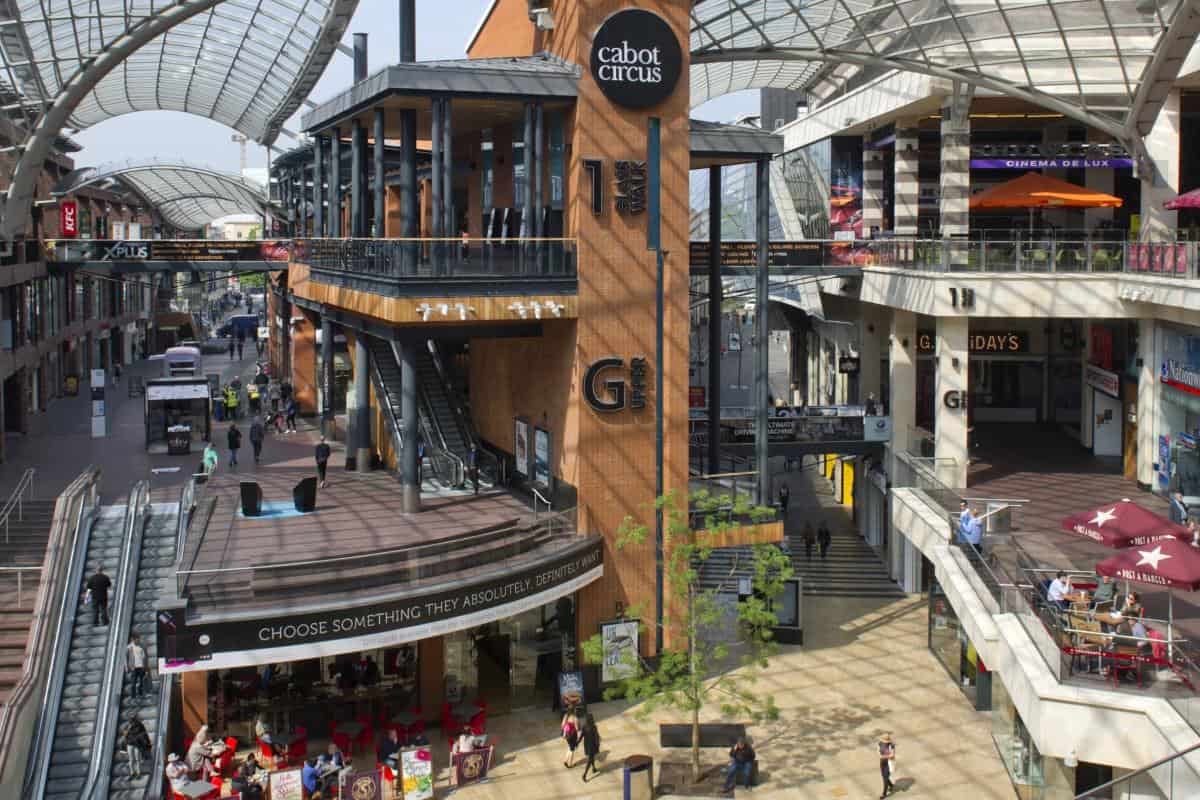Hammerson says it’s seeing customers visit its shopping centres less often but doing so with more purpose and spending more when they are there. By doing so, it says, they are avoiding the “increasingly expensive” costs of buying online.
Footfall at the property developer and operator’s shopping centres – which include Birmingham’s Bullring, The Oracle in Reading and Cabot Circus in Bristol – and improved by 11 percentage points between January and December 2022, and it ended the year at 90% of 2019 levels, while retail sales remained ahead of those levels. For the whole of the year, it reports group footfall up by 39% on the previous year. Growth was strongest in the UK (+41%) followed by France (+36%) and Ireland (+35%). Retail sales, meanwhile, grew by “double digits” on last year and by 3% on 2019, when reported on a like-for-like basis that strips out the effect of store and business openings and closures.
“Sales recovered strongly as consumers are shopping less frequently but visiting our destinations with more purpose, also avoiding increasingly expensive delivery and return costs charged by online retailers,” says Hammerson in its full-year statement. “The improvement in store like-for-like performance also illustrates fewer better performing retailers reflective of our shift away from reliance on legacy fashion to a broader mix of best-in-class retail, food and social, services and leisure.”
It added: “Best-in-class occupiers recognise the importance of city centre locations and the symbiotic nature of their physical and online channels, and we are working in partnership to deliver our proposition to this new reality. This integrated experience is the Hammerson offering and will continue to attract the very best occupiers during the ongoing flight to quality. We are well placed to benefit from these trends.”
Shoppers returned in particular to Hammerson’s value retail shopping villages, where brand sales were 34% higher than the previous year and 5% below 2019 levels. Footfall was 9% lower than in 2019, following a focus on digital marketing to target high net worth UK customers. In 2023 it expects to see the return of international tourists.
Some 75% of Hammerson’s overall marketing budget was on digital marketing in the fourth quarter of the year, including trials with TikTok and Snap Chat. The business is also focusing on repurposing former department stores, including the former Debenhams store at the Bullring which is to be occupied by TOCA Social and Marks & Spencer.
The update comes as Hammerson today reports net rental income of £174.8m in the year to December 31 2022, up by 0.2% from £174.4m a year earlier. During the year it struck 317 leasing deals – a net 2% up on the previous year –adding £25m in rent to its income. LFL turnover rents rose by 111%.
The business reported a bottom-line loss of £164m, largely as a result of a £282m revaluation deficit. The loss was 61% lower than last year, when Hammerson reported a bottom-line loss of £429m. The value of its portfolio fell by 5% to £5.1m, from £5.4bn last time, as a result of both the revaluation deficit and property sales.
Rita-Rose Gagné, chief executive of Hammerson, says: “Today, Hammerson is a better, more agile, and resilient business. Our results are evidence of another year of significant strategic, operational and financial progress, against a volatile macroeconomic and market backdrop. We have focused on what we can control – sharper operations growing like-for-like gross rental income and reducing the cost base – delivering a significant increase in adjusted earnings. Notwithstanding downward revaluations at the end of the year, we have maintained a stable balance sheet.”
Gagné says the business has simplified its core portfolio, with a focus on city centres.
“We have enlivened and reinvigorated our assets by introducing new occupiers, uses and concepts,” she says. “We are actively re-purposing our destinations, with an increased emphasis on commercialisation, marketing and placemaking, in turn creating exceptional spaces for our occupiers and customers. We have brought a sharper focus to our development pipeline to create value and optionality.
“We have set ourselves more to do and continue to be focused on disciplined execution of our strategy.”









